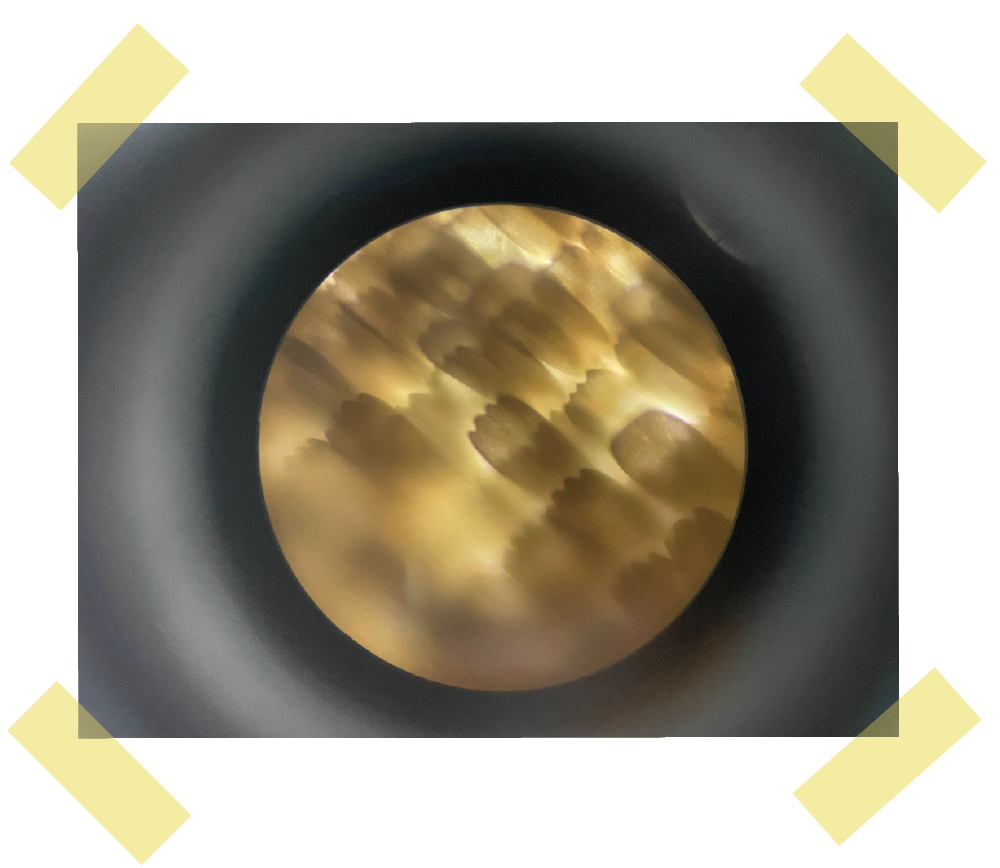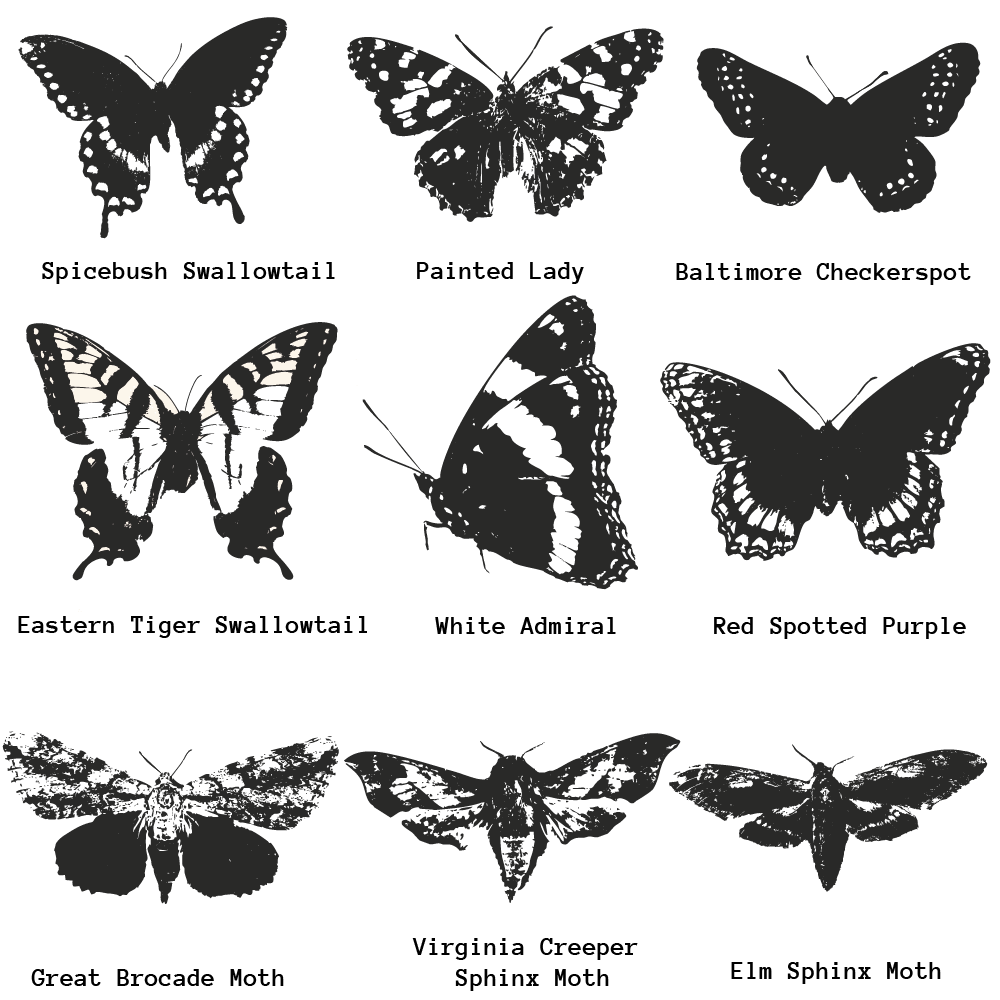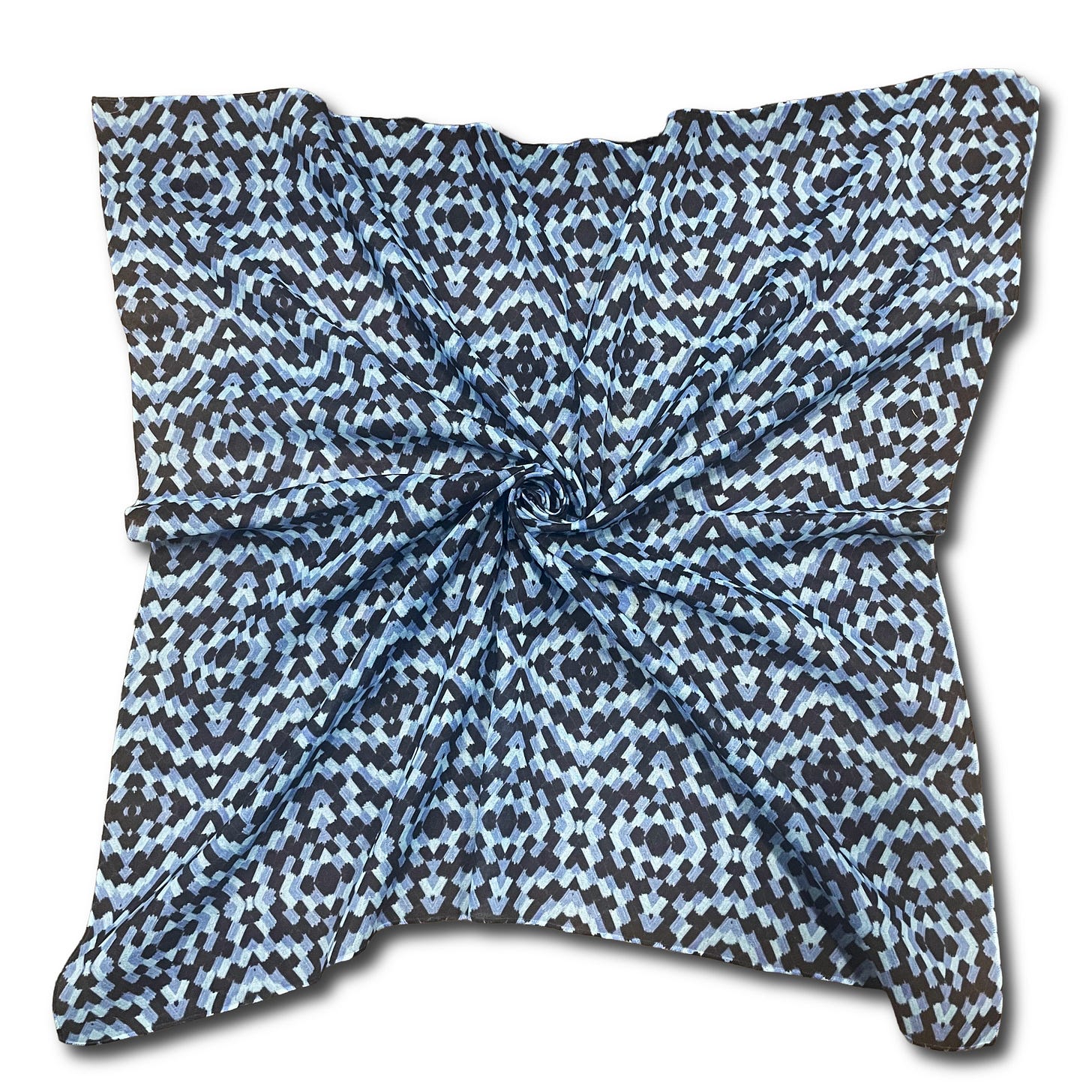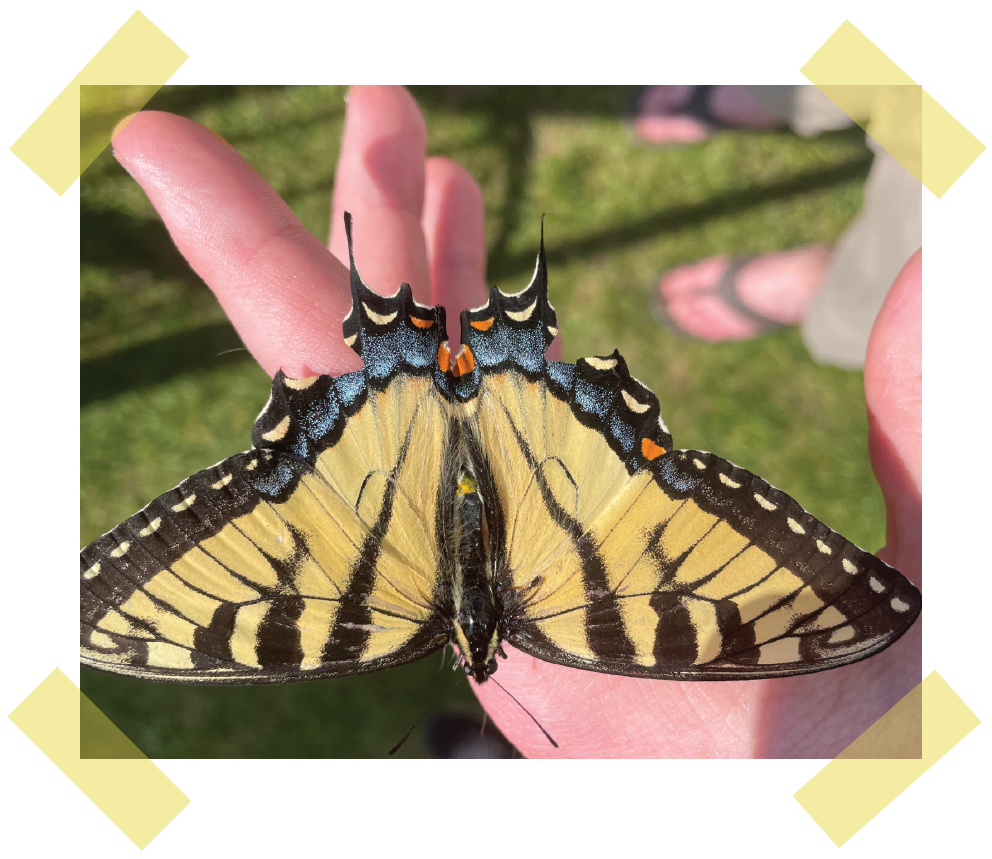Butterflies have always felt like a mystery to me. To this day, I still announce, “Look! A butterfly!” just like I did as a child. Hoping to capture the memory rarely works as the image is never as vibrant as seeing one with your own eyes.
As a child, I loved visiting the Frederik Meijer Gardens & Sculpture Park in Grand Rapids, Michigan. Every spring, we’d visit their Lena Meijer Topical Conservatory. Imagine stepping from a chilly spring day into a humid dome where hundreds of wings flicker. It was like stepping into another world.
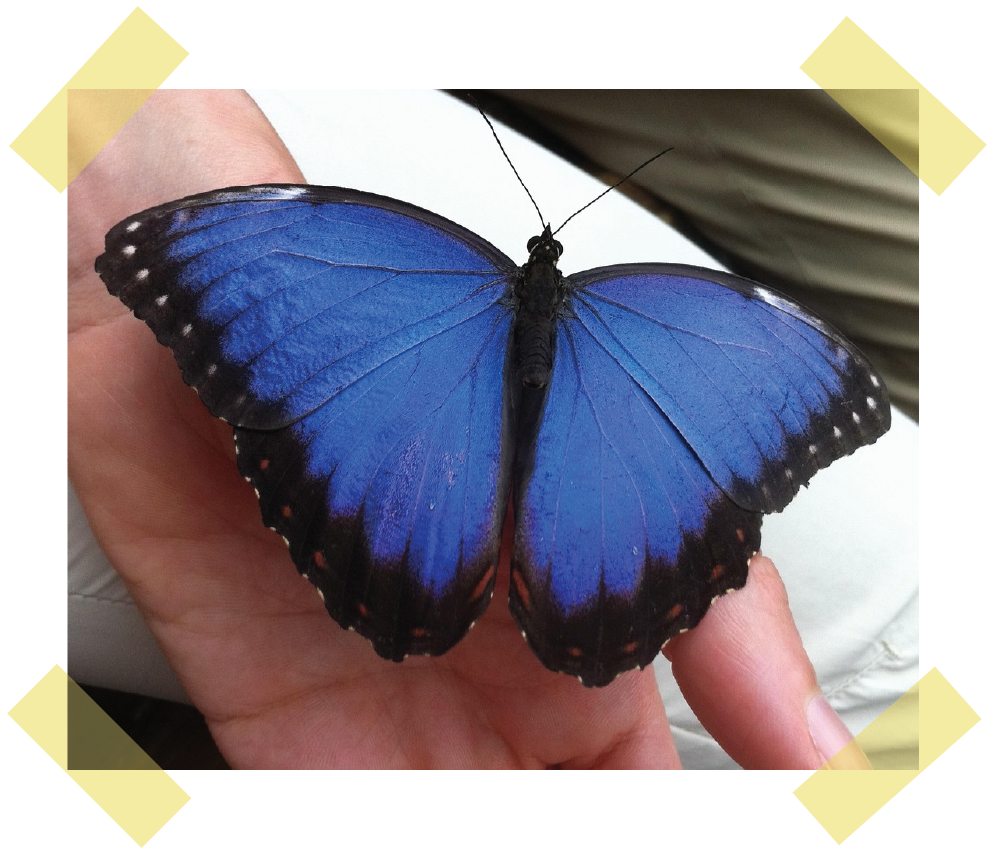
I remember chasing the Blue Morphos, these enormous, iridescent creatures whose wings flashed like mirrors. They’d vanish into foliage only to reappear in another corner, as if playing hide and seek. Every glimpse carried a quiet challenge to pay attention, notice beauty, and stay curious.
That childlike awe never left. Years later, it became fuel for my creative work at Statement Species, but more deeply, it taught me how wonder leads to both art and science.
Microscopic Photography
My father, a retired Earth Science teacher, filled our home with fossils, rocks, and yes, butterfly collections. So when I wanted to move beyond admiration into study, I borrowed one of his specimens and placed it under a microscope.
What I found amazed me. A butterfly wing is actually built from thousands upon thousands of flat, overlapping scales. Some contain pigments, others act like prisms bending light into shimmering blues and greens. The flash of a Morpho’s wing? Light physics!
And those bold spots near the edges of their wings? (Scroll up to see the Blue Morpho butterfly again). They’re not just decorative. They function like decoys, luring predators toward expendable edges instead of vital organs. A bird may tear a wing, but the butterfly often escapes.
It was the perfect reminder that science and art are not separate realms but mirrors of one another. The closer we look, the more beauty we find, and the more meaning behind that beauty.
Designing
Curiosity alone could have kept me happily buried in microscopes and sketchbooks. But eventually, I wondered if these discoveries could take another form. Could I translate science into something tactile, something wearable?
I began photographing butterflies from my dad’s collection and redrawing them digitally. The silhouettes turned out bold and graphic, like stamps or emblems. From there came the slow art of pattern-making.
I traced microscopic scales, made kaleidoscopic-like patterns, and tinted them with Monarch orange, Swallowtail yellow, and Blue Morpho. Then, I had them printed on scarves. It was a unique blend of science and fashion.
The Other Side of Beauty: Conservation
Butterflies aren’t just decorative, they are pollinators, food sources, and fragile indicators of ecosystem health. When their numbers fall, it signals deeper problems in the environment.
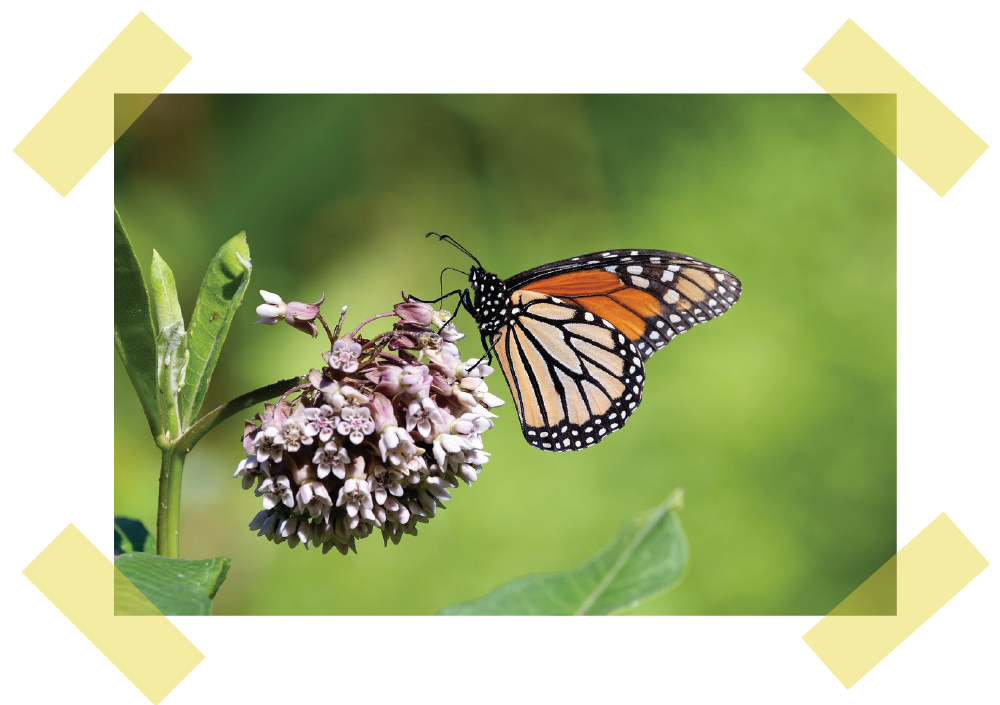
Here’s a glimpse of some species at risk:
Threatened (at risk but not yet endangered):
Dakota Skipper
Hermes Copper
Monarch (proposed for listing as threatened)
Baltimore Checkerspot (threatened within Maryland, and one I featured in my work)
Endangered butterflies:
Mission Blue
Palos Verdes Blue
Saint Francis’ Satyr
Endangered moths:
Bog Buck Moth
Blackburn’s Sphinx Moth
The list is sobering. Habitat loss, pesticides, invasive species, climate change, and even light pollution all play a role.
And yet, there is hope. Because these creatures are so sensitive, even small efforts can ripple outward. The following can have an impact:
Planting native flowers.
Growing host plants like milkweed for Monarchs.
Avoiding pesticides.
Leaving a corner of your yard wild with leaf litter, logs, or tall grasses where larvae can grow and pupate.
Butterflies remind us that beauty and fragility are inseparable. Caring for them isn’t just an act of conservation, it’s a way of protecting wonder itself.
Wonder as a Compass
For me, butterflies began as fascination, then became art, then deepened into conservation. For you, they might inspire a new garden, a sketchbook, a field journal, or simply to pause to notice what’s fluttering past.
How do you respond to the wonder in your life?
🦋If you want to see the fashion side of things, you can view the Butterfly + Moth Clothing Collection over at Statement Species.



